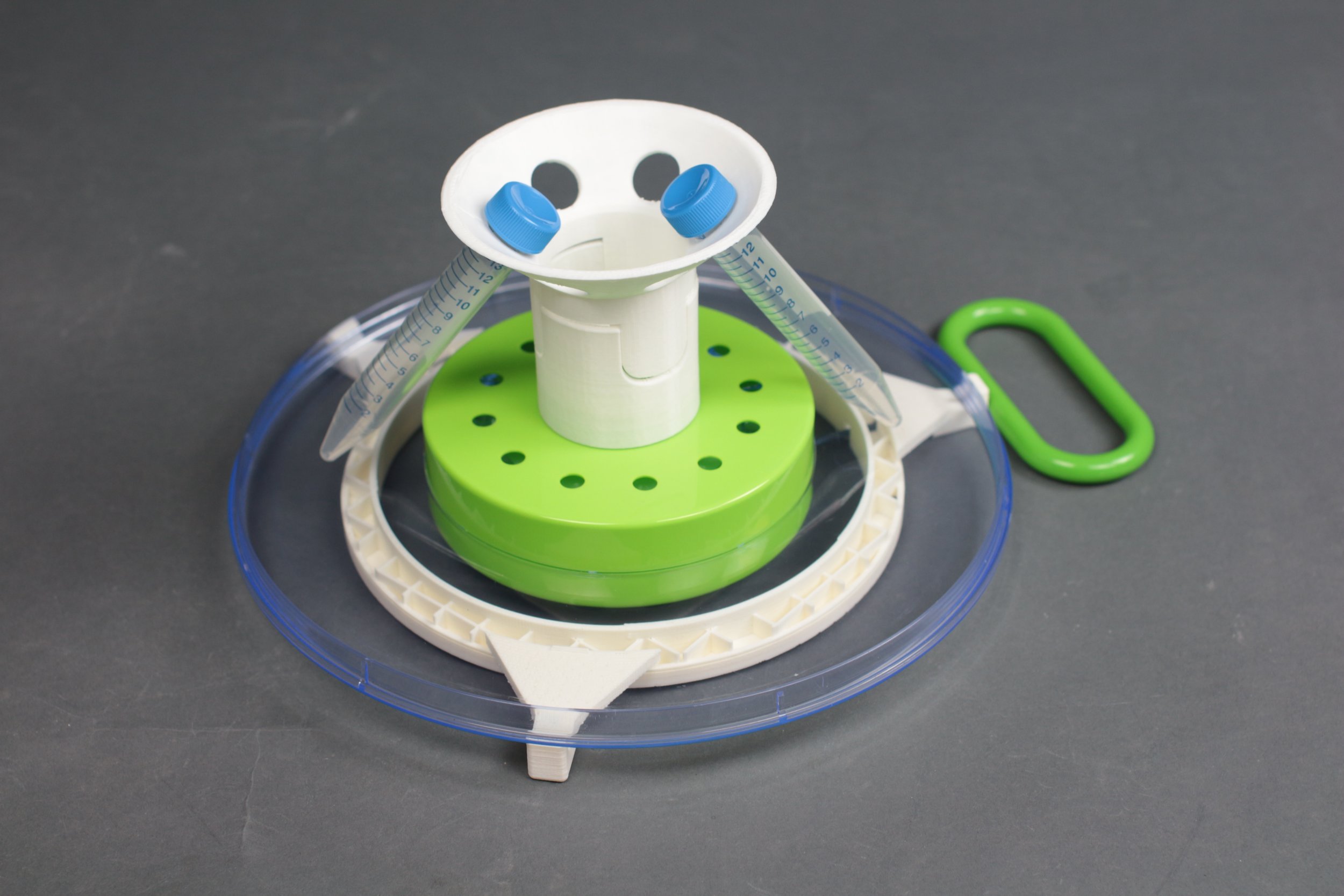3D Printed Centrifuge for International Health Labs
For the following project, our student design team was asked by a national health organization to improve the design of a manual centrifuge in international health laboratories.
Team Members: Wen Hua
Support: Georgia Institute of Technology, Prof. Wendell Wilson
Date Completed: March 2016
Awards: Core77 2017 Student Notable for Open Design, Dubai Design Week 2017 Global Grad Show
User Research
Currently, many of their international labs have unreliable electricity, despite having industrial strength centrifuges. To compensate, many lab workers resort to unsafe lab technuques in order to spin samples. These can pose a risk to the lab worker as well as the sample. To begin our design work, we first aimed to gain an understanding of international health labs where the parduct would be used. Research methods included literature research, primary stakeholder interviews, and competitive analysis.
Synthesis
Based on primary interviews and secondary research, a series of key stakeholders were identified. After researching our stakeholders, we established their location on a matrix determing who would have ifluence vs importance. Finally, we created a list of key findings that represent the larger social-political context the product would be used in.
NEEDS:
Lab testing and bacterial research critical to health campaigns such as PEPFAR and Global Health Initiative
Important to external partners such as WHO, USAID, Global Fund
In the case of meningitis, critical needs in high risk areas such as Meningitis Belt
Is in the best interest of the international development community to invest in labs
CHALLENGES:
Supply and conditions of the labs do not provide consistent environments
Educational training of lab staff is inconsistent
Poor supply chain management leads to inequality in resource distribution and technological gaps in more rural areas
Inconsistentinfrastructure in place for continuing education and equipment maintenance
Design Research
To initiate our design ideation, we gained a better understanding of how centrifuges operate. We also examined every day objects that could manually mimic the effects of a centrifuge.
Because the materials of the salad spinner would be our raw materials, we went to household stores to collect different models of salad spinners, and see what brands were most common in a retail environment. We hypothesized that designing around a common model would be more economical
In our collection, 6 common salad spinner models were identified and 5 models were ultimately tested. In additon, we also found that the salad spinner spun with either a pulling, cranking or pushing mechanism. .
Concept Ideation
CONCEPT TESTING & COMPARISON
Final Concept
Final Concept based on client feedback from the 3 concepts. Modeling and Renderings completed by Wen Hua.
Final Concept physical concept based off of rendering. 3D printing completed by Wen Hua.
STEPS FOR USE
USE WITH DIFFERENT SIZED TUBES
SPECIAL FEATURES
USE CASE VIDEO
















